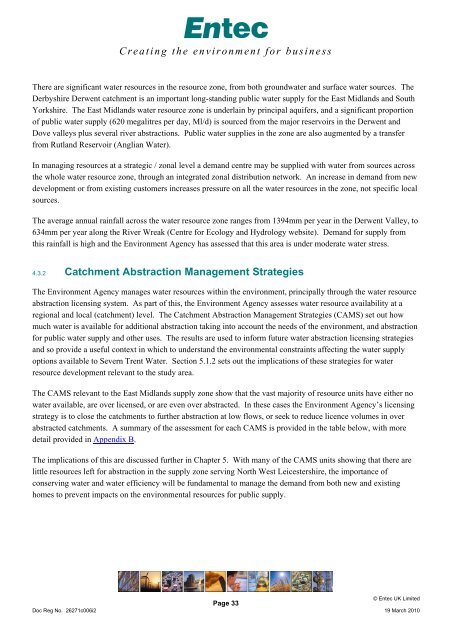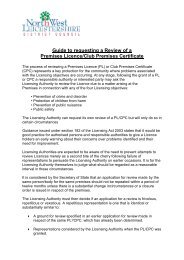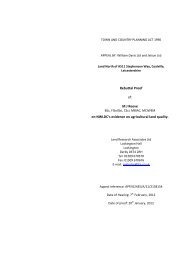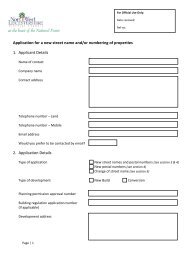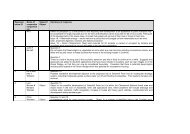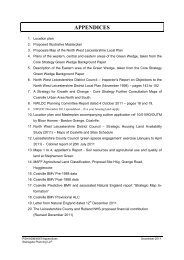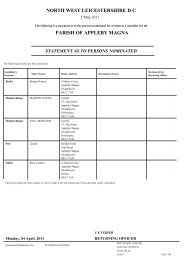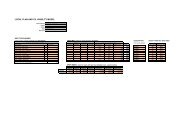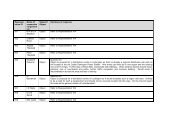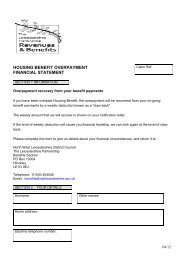Water Cycle Study - March 2010 - North West Leicestershire District ...
Water Cycle Study - March 2010 - North West Leicestershire District ...
Water Cycle Study - March 2010 - North West Leicestershire District ...
You also want an ePaper? Increase the reach of your titles
YUMPU automatically turns print PDFs into web optimized ePapers that Google loves.
Creating the environment for business<br />
There are significant water resources in the resource zone, from both groundwater and surface water sources. The<br />
Derbyshire Derwent catchment is an important long-standing public water supply for the East Midlands and South<br />
Yorkshire. The East Midlands water resource zone is underlain by principal aquifers, and a significant proportion<br />
of public water supply (620 megalitres per day, Ml/d) is sourced from the major reservoirs in the Derwent and<br />
Dove valleys plus several river abstractions. Public water supplies in the zone are also augmented by a transfer<br />
from Rutland Reservoir (Anglian <strong>Water</strong>).<br />
In managing resources at a strategic / zonal level a demand centre may be supplied with water from sources across<br />
the whole water resource zone, through an integrated zonal distribution network. An increase in demand from new<br />
development or from existing customers increases pressure on all the water resources in the zone, not specific local<br />
sources.<br />
The average annual rainfall across the water resource zone ranges from 1394mm per year in the Derwent Valley, to<br />
634mm per year along the River Wreak (Centre for Ecology and Hydrology website). Demand for supply from<br />
this rainfall is high and the Environment Agency has assessed that this area is under moderate water stress.<br />
4.3.2 Catchment Abstraction Management Strategies<br />
The Environment Agency manages water resources within the environment, principally through the water resource<br />
abstraction licensing system. As part of this, the Environment Agency assesses water resource availability at a<br />
regional and local (catchment) level. The Catchment Abstraction Management Strategies (CAMS) set out how<br />
much water is available for additional abstraction taking into account the needs of the environment, and abstraction<br />
for public water supply and other uses. The results are used to inform future water abstraction licensing strategies<br />
and so provide a useful context in which to understand the environmental constraints affecting the water supply<br />
options available to Severn Trent <strong>Water</strong>. Section 5.1.2 sets out the implications of these strategies for water<br />
resource development relevant to the study area.<br />
The CAMS relevant to the East Midlands supply zone show that the vast majority of resource units have either no<br />
water available, are over licensed, or are even over abstracted. In these cases the Environment Agency’s licensing<br />
strategy is to close the catchments to further abstraction at low flows, or seek to reduce licence volumes in over<br />
abstracted catchments. A summary of the assessment for each CAMS is provided in the table below, with more<br />
detail provided in Appendix B.<br />
The implications of this are discussed further in Chapter 5. With many of the CAMS units showing that there are<br />
little resources left for abstraction in the supply zone serving <strong>North</strong> <strong>West</strong> <strong>Leicestershire</strong>, the importance of<br />
conserving water and water efficiency will be fundamental to manage the demand from both new and existing<br />
homes to prevent impacts on the environmental resources for public supply.<br />
Doc Reg No. 26271c006i2<br />
Page 33<br />
© Entec UK Limited<br />
19 <strong>March</strong> <strong>2010</strong>


